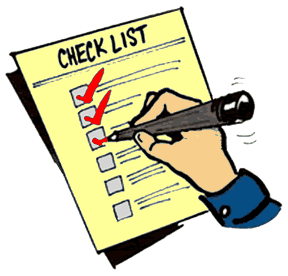I’ve started using a daily checklist. It’s a list of things I need to do as soon as I sit down at my computer and throughout the day. Most of the items on the list are things I’m already doing, without prompting from a list, but I like seeing them in front of me. I know I won’t forget anything and I can get things done and out of the way.
I have three categories: @admin, @personal, and @work.
On the @admin list are things like checking the calendar, email, and a @tickler list (upcoming date-oriented tasks to review or start), followed by checking my other lists to see what’s on tap for the day and for the week.
@personal includes my daily walk, reading, and writing in my journal.
@work includes some of my routine activities like writing a daily email/blog post and working on my current book project.
I’m just rolling this out so I know it’s going to change. I’m already thinking I could combine the three lists into one since I work from home and don’t ordinarily differentiate between work and personal, and because admin is intertwined with my work.
But, we’ll see.
If it’s not obvious, I like lists. I guess I’m a linear thinker, although there are times when I like to use a mind map to brainstorm and flesh out ideas. For the record, once I’ve done that, I convert them to a linear outline or list prior to “doing”.
I’ve also got a checklist for my weekly review. This has always been a work in progress.
Next up? Maybe an evening “shutdown” list. Hmm, I wonder if I need to write down “Netflix and chill”.
Evernote for Lawyers. Click here








